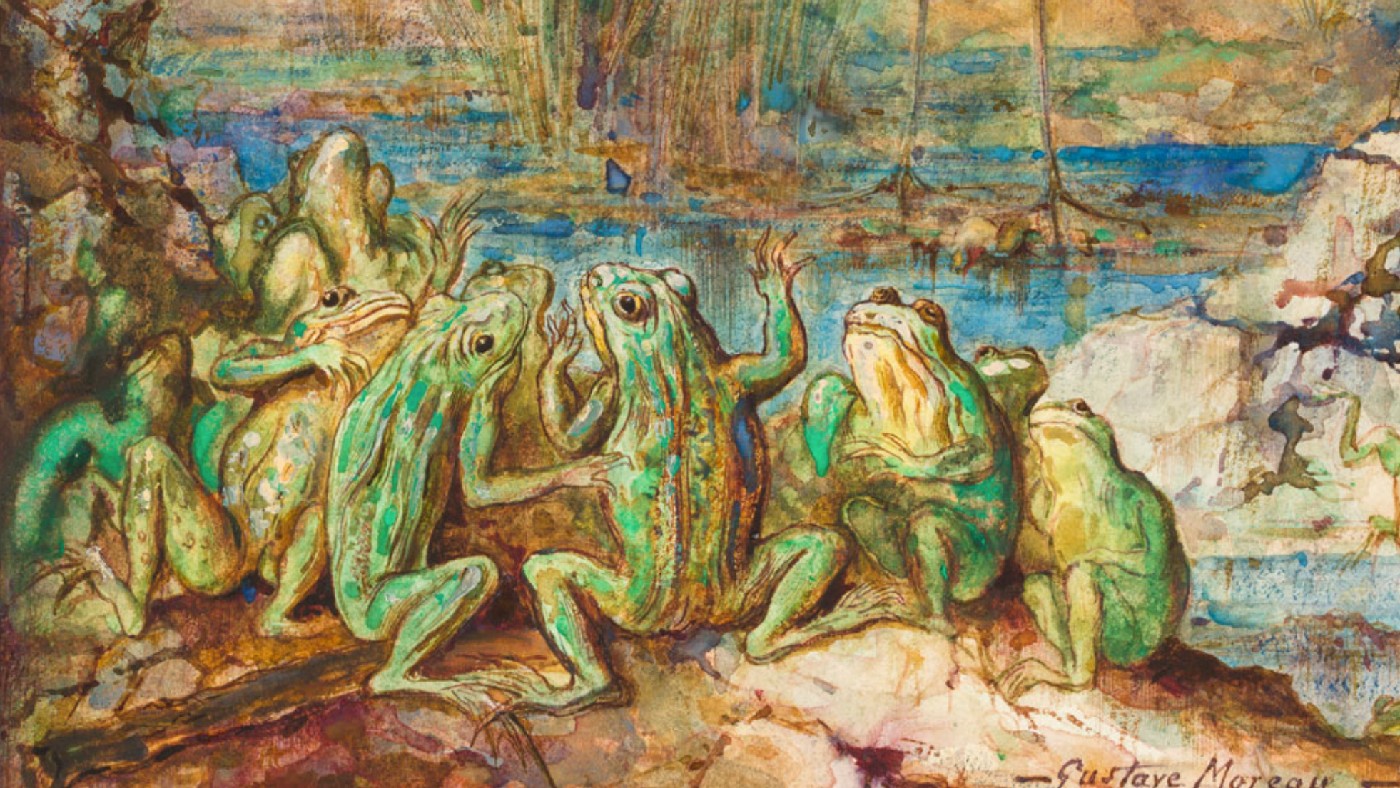Gustave Moreau’s The Fables at Waddesdon Manor: what the critics are saying
‘Looking at these dream-worlds is like passing through a fairy-tale forest thick with magic’

The French symbolist painter Gustave Moreau (1826-1898) has never regained the “cult status” that he had in his lifetime, said Maev Kennedy in The Art Newspaper. His work is rarely exhibited today, and if he is remembered at all, it is as a histrionic and “feverish” figure.
His palette, one critic complained, was like that of a jeweller “drunk on colour”’; and no scene was complete without a flourish of the fantastical – with monsters, deities or demons. Yet in his time, he was considered “a visionary sage” who taught and greatly influenced the likes of Henri Matisse.
Now, a small show at Waddesdon Manor, a National Trust home formerly owned by the Rothschild family, seeks to explain why. The exhibition brings together the surviving fragments of a series of watercolours Moreau created to illustrate the fables of the 17th century poet Jean de La Fontaine. When first exhibited, this cycle created a sensation: George Bernard Shaw, for one, remarked that it entitled Moreau “to rank with Delacroix and Burne-Jones”.
The Week
Escape your echo chamber. Get the facts behind the news, plus analysis from multiple perspectives.

Sign up for The Week's Free Newsletters
From our morning news briefing to a weekly Good News Newsletter, get the best of The Week delivered directly to your inbox.
From our morning news briefing to a weekly Good News Newsletter, get the best of The Week delivered directly to your inbox.
Created between the 1870s and the 1880s, the series of 64 pictures was sold on the original owner’s death and then split: about half of the collection was “looted by the Nazis”, and most of it has never been recovered. This is the first time that almost all the remaining pictures have been shown in public together for more than a century. Can it restore Moreau’s reputation?
I approached this show with some “trepidation”, said Waldemar Januszczak in The Sunday Times. Moreau’s reputation for artistic “onanism” is well deserved, and the works in this exhibition make few concessions to subtlety. The first image we encounter is an allegory of Fable as a woman “flying across the sky on the back of a hippogriff”. Another has “an angry dragon with more tails than an octopus has legs” crashing through a fence to devour a man hiding in a tree.
Elsewhere, Moreau depicts a fable in which a man falls in love with his cat and somehow manages to turn her into a woman. After some “furious lovemaking”, she leaps from bed to chase a mouse across the room. The protagonist of this “creepy” tale is shown cowering in the sheets like “a child watching a horror movie”.
Yet eccentric though they are, The Fables represent “a remarkable body of work”. These pictures teem with “blues that throb like powdered sapphires, reds that glow like rubies, gold that gleams like an Australian nugget” – exceeding all expectations of what can be achieved with watercolours.
A free daily email with the biggest news stories of the day – and the best features from TheWeek.com

His depictions of animals are “beautifully observed”: Moreau captures an elephant frightened by a mouse and a “screaming monkey” riding “on the back of a speeding dolphin” more believably than you might think possible.
You don’t need to be familiar with La Fontaine’s fables to marvel at Moreau’s bizarre inventiveness, his breadth and his originality, said Alastair Sooke in The Daily Telegraph. Each picture is “a miniature world unto itself”: Moreau paints the Senate of Ancient Rome, “quasi-Dutch and Shakespearean scenes”, and even “radiant landscapes reminiscent of Turner”.
“Looking at these dream-worlds is like passing through a fairy-tale forest thick with magic and flickering, supernatural lights.” What an “intoxicating vision” Moreau’s was. And “what an extraordinary show this is”.
-
 Will the mystery of MH370 be solved?
Will the mystery of MH370 be solved?Today’s Big Question New search with underwater drones could finally locate wreckage of doomed airliner
-
 The biggest astronomy stories of 2025
The biggest astronomy stories of 2025In the spotlight From moons, to comets, to pop stars in orbit
-
 Why are micro-resolutions more likely to stick?
Why are micro-resolutions more likely to stick?In the Spotlight These smaller, achievable goals could be the key to building lasting habits
-
 The best food books of 2025
The best food books of 2025The Week Recommends From mouthwatering recipes to insightful essays, these colourful books will both inspire and entertain
-
 Art that made the news in 2025
Art that made the news in 2025The Explainer From a short-lived Banksy mural to an Egyptian statue dating back three millennia
-
 Nine best TV shows of the year
Nine best TV shows of the yearThe Week Recommends From Adolescence to Amandaland
-
 Winter holidays in the snow and sun
Winter holidays in the snow and sunThe Week Recommends Escape the dark, cold days with the perfect getaway
-
 The best homes of the year
The best homes of the yearFeature Featuring a former helicopter engine repair workshop in Washington, D.C. and high-rise living in San Francisco
-
 Critics’ choice: The year’s top 10 movies
Critics’ choice: The year’s top 10 moviesFeature ‘One Battle After Another’ and ‘It Was Just an Accident’ stand out
-
 A luxury walking tour in Western Australia
A luxury walking tour in Western AustraliaThe Week Recommends Walk through an ‘ancient forest’ and listen to the ‘gentle hushing’ of the upper canopy
-
 Joanna Trollope: novelist who had a No. 1 bestseller with The Rector’s Wife
Joanna Trollope: novelist who had a No. 1 bestseller with The Rector’s WifeIn the Spotlight Trollope found fame with intelligent novels about the dramas and dilemmas of modern women